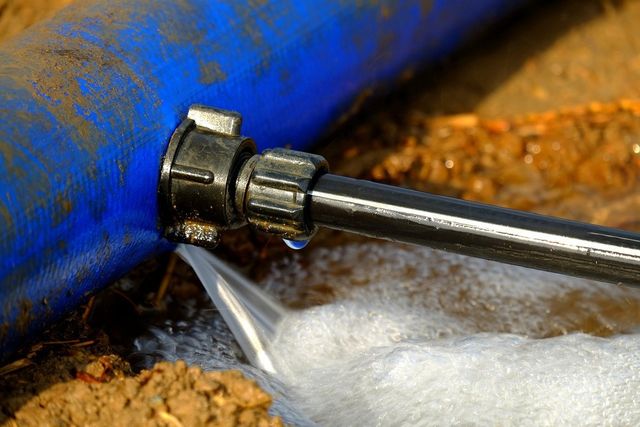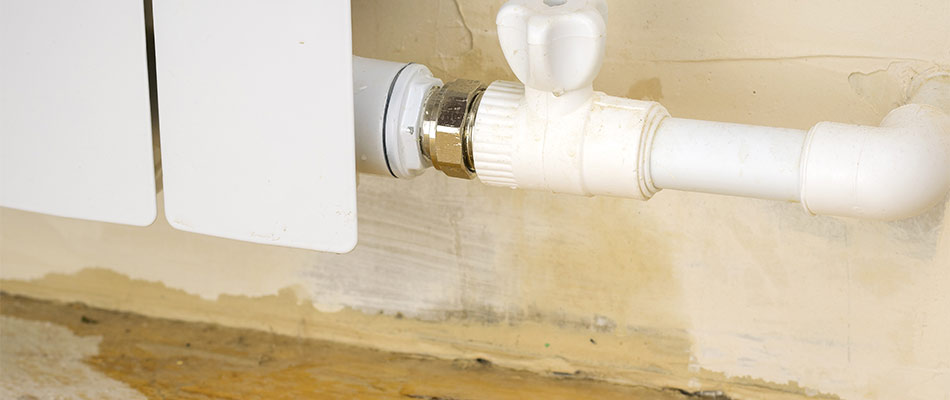Exactly how to Inspect If Your House Has a Concealed Leakage
Exactly how to Inspect If Your House Has a Concealed Leakage
Blog Article
The author is making a number of great points about Detecting hidden plumbing leaks overall in this article just below.

Early discovery of dripping water lines can minimize a potential calamity. Aside from saving you cash, it will decrease the aggravation and disappointment. The moment you locate a leak, calling your plumber for fixings is the very best service. Nevertheless, some little water leakages might not show up. Right here are some hacks that help if you can not spot it with your naked eyes.
1. Check Out the Water Meter
Every house has a water meter. Examining it is a proven manner in which helps you find leakages. For starters, turn off all the water resources. Make sure nobody will certainly flush, make use of the tap, shower, run the cleaning machine or dish washer. From there, most likely to the meter and watch if it will change. Considering that nobody is utilizing it, there must be no activities. If it moves, that suggests a fast-moving leakage. If you discover no adjustments, wait an hour or two and also inspect back once again. This means you may have a slow leakage that could also be below ground.
2. Examine Water Consumption
If you detect abrupt modifications, despite your intake being the exact same, it indicates that you have leaks in your plumbing system. A sudden spike in your costs suggests a fast-moving leakage.
On the other hand, a stable increase every month, despite having the same habits, reveals you have a sluggish leak that's likewise gradually rising. Call a plumber to thoroughly examine your building, especially if you really feel a warm area on your floor with piping underneath.
3. Do a Food Coloring Examination
When it comes to water usage, 30% comes from bathrooms. If the shade in some way infiltrates your bowl during that time without flushing, there's a leakage in between the storage tank and bowl.
4. Asses Exterior Lines
Do not forget to examine your outside water lines also. Ought to water leak out of the link, you have a loosened rubber gasket. One small leak can squander heaps of water as well as surge your water costs.
5. Evaluate as well as Examine the Scenario
House owners must make it a behavior to examine under the sink counters as well as also inside cupboards for any bad odor or mold and mildew development. These two red flags show a leak so punctual attention is called for. Doing routine inspections, also bi-annually, can save you from a significant issue.
If you know your residence is currently old, keep a watchful eye on your heaters, pipes, pipes etc. Check for stainings and damaging as the majority of pipelines as well as appliances have a life expectancy. They will additionally naturally degrade because of tear and also wear. Don't wait for it to rise if you presume dripping water lines in your plumbing system. Call a professional plumber as soon as possible so you do not end up with an awful mess in your house.
Early discovery of dripping water lines can mitigate a possible disaster. Some tiny water leakages may not be visible. Examining it is a proven way that assists you find leakages. One small leak can lose tons of water and also increase your water costs.
If you presume leaking water lines in your plumbing system, don't wait for it to intensify.
How to Know If Your Home Has a Hidden Leak
Water Meter Reveals Inexplicable Water Usage
If you’d like to test whether or not there’s a leak somewhere in your home, you can do this using your water meter. Here is how to conduct the test:
Don’t use any water in your home for at least 30 minutes; this also means not turning on faucets or water-using appliances.
Go outside, and check your water meter for activity.
If your water meter shows that there was activity, even though no one was using any water, this proves that there is a leak in your home.Visible Mold or Mildew Growth
Leaks behind walls create moist, dark environments that allow mold and mildew to grow and thrive. Eventually, you might see mold growth forming on the wall closest to a hidden leak.
If mold is growing in an area that receives a high amount of moisture, such as a bathroom, it may simply be an indication that better ventilation is needed. However, if you see mold growth on a wall or the ceiling in an area where you would not expect, you probably have a hidden leak.
Musty, Mildew Odor
Sometimes you might not be able to see the mold or mildew that is growing as a result of a leak. However, the smell can give the problem away just as easily. If you catch a whiff of something musty, there’s a good chance that old water is collecting somewhere in your home that you can’t see.
Stained/Warped Walls, Ceilings, or Floors
When your home soaks up water, a variety of red flags can become visible, including ceiling stains, bubbling drywall, warped walls, and sagging floors. While these issues can be caused by excess humidity, they can also be signs that a pipe or plumbing connection has started leaking behind your walls.
Inexplicably High Water Bill
After a while, you get a general sense for what your water bill should be. If you own a pool or sprinkler system, your bill will tend to be higher during summer. However, if you receive a water bill that seems especially high, and you can’t figure out what caused it, then you may have a hidden leak somewhere that’s increasing your bill.
https://www.plumbingjoint.com/blog/2019/july/how-to-know-if-your-home-has-a-hidden-leak/

We are very focused on Top leak detection hacks and I really hope you enjoyed reading my blog post. Sharing is nice. Helping people is fun. Thank you for your time. Come back soon.
Report this page